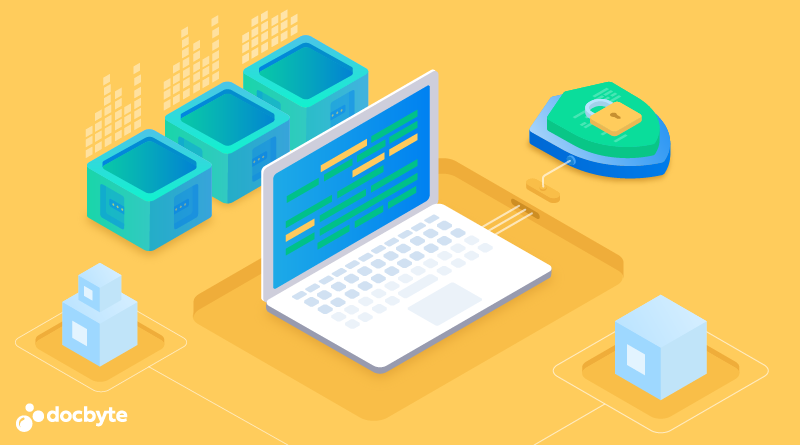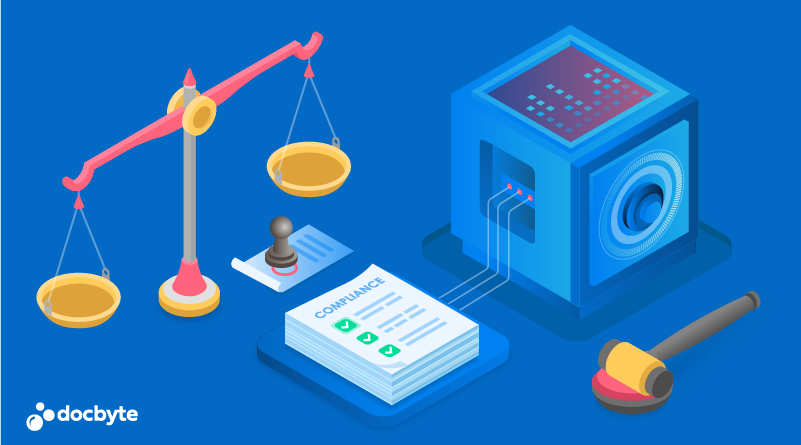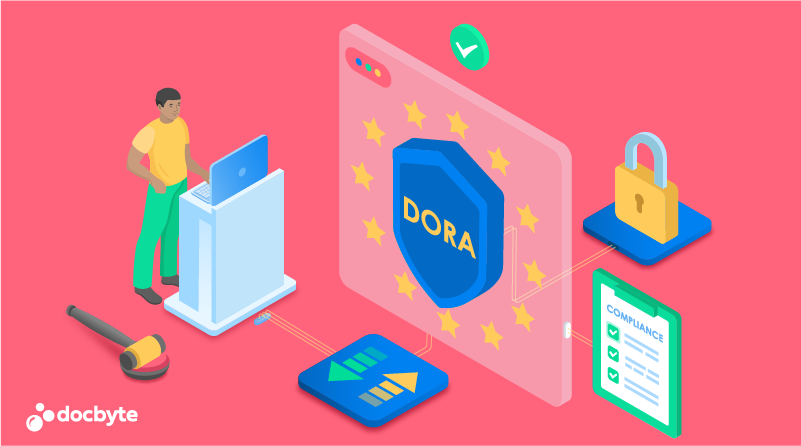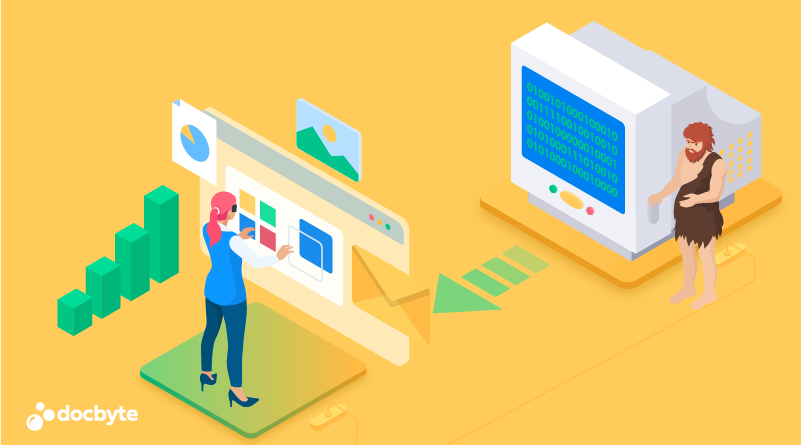The surge in digitalization impacts how data, such as sensitive information or historical records, is generated and stored. What remains consistent and important throughout the digitalization outbreak is the preservation of data.
So far, we have learned the two founding stones of data preservation: Qualified Electronic Archiving (QEA) and Digital Preservation (eArchiving). When you merge these powerful strategies you get the equilibrium between the integrity and authenticity of data while ensuring that the concerned organization complies with certain legal compliance.
Qualified Electronic Archiving (QEA) is the ultimate solution that systematically manages the storage, archiving, and retrieval of digital records following regulatory requirements. QAE handles the authenticity, integrity, and accessibility of data and, as a bonus, boosts the restriction on access and modification.
Organizations that need to follow strict legal mandates, like finance, healthcare, or government, implement QAE for efficient operations.
Digital Preservation, on the other hand, takes responsibility for storing, the long-term preservation and accessibility of data. Digital Preservation tends to secure the data for future use while maintaining integrity to ensure its true worth despite the change in technology or format. The attached data is shifted to new devices and formats per evolution.
As technology continues to mature, it unlocks various challenges; these challenges might be countered while securing the data or preserving it, and trust me, it’s more complex than it sounds. This blog uncovers Data Loss Prevention strategies and how QEA and digital preservation help along the way.
The importance of Data loss Prevention
Digitalization has rightfully placed itself as the spine of businesses and firms today, and even the slightest mistake can be catastrophic. The size of your organization does not matter; whether you are a small startup or a multinational corp, your primary responsibility is to secure your data from authorized access and prevent it from being lost.
This calls for Data Loss Prevention (DLP). Let’s address your concern first: what is Data Loss Prevention?
What is Data Loss Prevention?
Microsoft defines DLP as a software solution that safeguards sensitive information from unauthorized sharing, access, and loss. DLP incorporates various techniques and policies that detect, monitor, and protect data and ensure it remains secure, confidential, and compliant with legal requirements.
If you think DLP is a standard that can be applied without any alteration, that’s wrong! DLP has to be customized according to your business-specific requirements, which means you cannot apply the same strategy across different industries.
There needs to be a focus and pinpointed area that needs immediate attention to save it from damage. We can say that DLP acts as a defence mechanism that continuously looks for potential threats that can risk the data.
Why is DLP Important?
As we have already understood the context behind Data Loss Prevention, let’s discuss why it is crucial for your business.
Data Breach Protection Alert
With the increased digitalization, data breaches have become a common threat. Stealing or manipulating sensitive information means data breaches and can lead to devastating financial loss, credibility damage, or legal repercussions. DLP implements access control and monitors data movement.
Regulatory Compliance
Digitalized records call out for compliance checks when it comes to data protection. These rules are non-negotiable. These standards should be followed strictly to avoid any legal fines and actions.
Data Preservation
The most important aspect of DLP is maintaining data integrity and ensuring it does not accept any unauthorized alteration or deletion.
Prevention of Insider Threat
The greatest threat data poses is from a current employee. DLP monitors and detects any suspicious or unusual activities of the employees and works to mitigate the potential threats within an organization.
Preserving Trust
Data breaches in organizations threaten customer trust as they expect their sensitive information to be dealt with responsibly. DLP ensures that every person’s confidence is maintained by demonstrating a strict commitment to data security.
DLP and Data Integrity
Data integrity deals with the quality, accuracy, or reliability of data throughout the time it is stored. DLP plays a crucial role in maintaining data integrity while ensuring that neither the data is altered nor lost/deleted. This is done by monitoring the access and flow of data.
Data Loss Prevention in Qualified Archiving
Qualified Archiving is a necessary discipline that oversees and manages legal and regulatory requirements. With the emergence of digitalization, QEA, long-term preservation, and data loss prevention solutions, and similar techniques have gained significant recognition. This ensures the preservation, accessibility, and reliability of digital records.
QEA gives an edge to data management. This feature necessitates the preservation and security of archived data. In such times, DLP emerges as the best practice. Let’s address some advantages of DLP in qualified archiving.
- Protection Against Data Loss
Effective archiving can furnish archived data. Data Loss Prevention solutions are the barrier against data loss, either done by a manual error or technical failure. This makes it important, especially when archived data holds some legal significance and must be preserved for legal purposes.
- Compliant Archiving
Compliant archiving follows rules about keeping, accessing, and preserving data, forming the basis for QEA. DLP ensures data is handled according to the set standards, preventing any actions that could compromise data integrity.
- Preserving Authenticity
The foremost goal of qualified archiving is to guarantee the authenticity of archived records and data, an essential requirement. DLP oversees data flow and access controls, effectively preventing unauthorized modifications.
- Long-Term Data Retention
Qualified archiving first focuses on preserving data for a long time so it can be reused. DLP strategies provide a helping hand in this by providing necessary regulations that ensure data remains unchanged and is accessible over time.
The Difference Between Qualified Electronic Archiving and Long-Term Preservation
Regarding securing the data, both QEA and long-term preservation prove beneficial but have different approaches. Qualified archiving stresses data preservation and access while meeting the legal requirements, ensuring validity. On the other hand, long-term preservation focuses on the accessibility and usability of data.
Next-Gen Data Loss Prevention Solutions
Despite technology growing smart, attackers grow even smarter. This has made data loss prevention solutions more crucial. Let’s discuss Next-Gen Data Loss Prevention Solutions, highlighting its capabilities, benefits, and role in securing the data in this evolving cybersecurity environment.
The Shift Between Traditional and Next-Gen DLP
Traditional DLP had some advantages but needed to catch up with the evolving technology as threats grew. Next-Gen DLP solution filled the gaps by adapting itself to the challenges posed by the digital world. These solutions offered a dynamic, proactive, and detailed approach to data protection.
Next-Gen DLP Features
Data is quickly analyzed to detect anomalies through data access patterns and user behavior. User and Entity Behavior Analytics (UEBA) implementation monitors user behavior to identify anomalies that may cause data breaches or insider threats.
These solutions create adaptive policies that can be adjusted according to user groups, devices, or data types. Increased digitalization has shifted focus to the cloud; therefore, Next-Gen DLP solutions focus on enhancing cloud data protection as well.
How to Maintain Compliance and Control While Storing Data
While data is the most valuable asset for any business due to the dynamic nature of data, there is a great need for compliance and control checks while storing. Compliance and control measures are important in protecting sensitive information. Losing the data is more than just your prime concern; legal compliance with eIDAS and GDPR regulations is an important challenge.
This section will briefly explain how compliant archiving is a one-fits-all solution for this challenge and how QEA and long-term preservation facilitate legal retention.
Legal Imperatives: eDIAS and GDPR
eIDAS and GDPR are the major regulatory compliances defined by the European Union for data security, protection, and legal retention.
- eDIAS handles electronic identification and trust services while ensuring the authenticity and security of electronic transactions. For legal validity, it defines a framework for electronic seals, signatures, and timestamps that verify legal validity.
- GDPR protects personal data. It restricts businesses while they deal with collecting, processing, and storing personal data. It stresses that personal data should be kept secure; non-compliance is severely penalised in other cases.
The Role of Compliant Archiving
Compliant archiving in any form (either QEA or long-term preservation) ensures organisations’ regulatory compliance. Let’s discuss how compliant archiving solutions dictate the legal imperatives:
- Qualified Electronic Archiving
QEA ensures digital records’ legal validity, integrity, and adherence to eIDAS standards. These standards provide a secure environment for electronic transactions. The following are its key features:
By merging eIDAS’s feature of legal validity, QEA can go beyond the ability to ensure that data remains accessible and reliable over a long period. Once data is archived, it cannot be changed; this feature guarantees the integrity and authenticity of data. QEA ensures that every record is legally permissible. This is important for electronic seals, signatures, and time stamps that comply with eIDAS.
- Long-Term Preservation
Long-term preservation complies with legal retention, and when combined with GDPR, it has a significant impact.
Similar to QEA, long-term preservation manages data integrity over time. This is important for GDPR because any unauthorized modification of personal or sensitive data results in non-compliance. GDPR focuses on securing stored personal data, and long-term preservation facilitates compliance, ensuring data is retained for the required duration.
Both GDPR and eIDAS promote regulatory compliance. Long-term preservation provides a record of data retention and access following compliance checks during auditing.
Importance of Data Retention and Advanced Loss Prevention
Data retention is important to understand the legal and regulatory compliance of an organization. While considering legal compliance, data retention verifies that each document follows regulations like GDPR or HIPPA for smooth strategic operations.
Let’s break into the top three reasons why data retention is important for your business today:
- Save Storage Cost: Businesses can stay updated with the latest trends and data requirements and save storage by deleting unnecessary data.
- Applying Legal Compliance: Make businesses capable of accessing relevant data anytime while following retention laws. These laws help in planning the durability of storage.
- Lowers the risk of data breach, theft, and insider threats: Firms that do not hesitate to invest in a professional DLP solution lower the danger of all kinds of data breaches. In this way, company employees cannot steal sensitive information to protect company data from insider threats.
- Protects from online phishing scams and unauthorised document sharing: A DLP solution can instantly detect and flag any sensitive data and documents users share. Moreover, a DLP solution can save a company’s data from online phishing scams that can steal secret information.
Benefits of Merging Data Retention and DLP
When data retention and advanced DLP are merged, organizations can verify the retainment of data according to legal and regulatory compliance while ensuring security standards are met, the data remains in its original form and is protected from unauthorized access, data can be used for historical reference without compromising security, and lastly, data is safe from any kind of loss.
QEA and Long-Term Preservation amalgamation
QEA deals with regulatory requirements while ensuring the validity and integrity of digital data; therefore, data cannot be tampered with and remains authentic. Long-term preservation, however, handles data authenticity while ensuring it’s relevant and accessible in the future.
The alliance between Advanced DLP and Data Retention
When data retention and advanced DLP are merged, organizations can verify the retainment of data according to legal and regulatory compliance while ensuring security standards are met, the data remains in its original form and is protected from unauthorized access, data can be used for historical reference without compromising security, and lastly, data is safe from any kind of loss.







